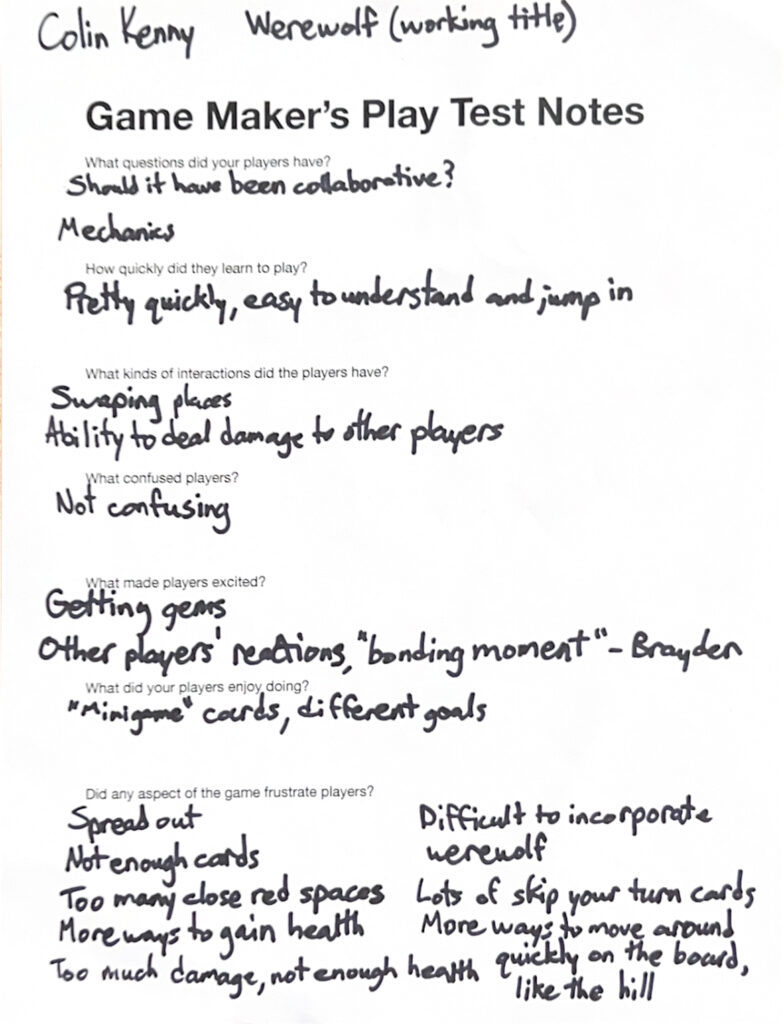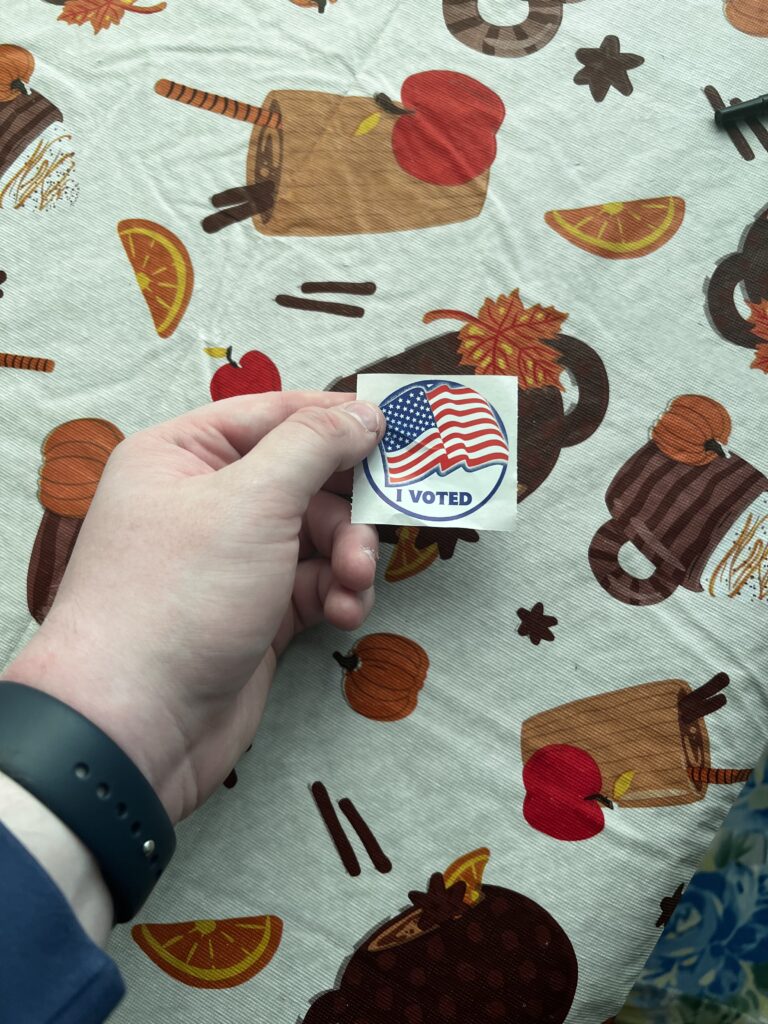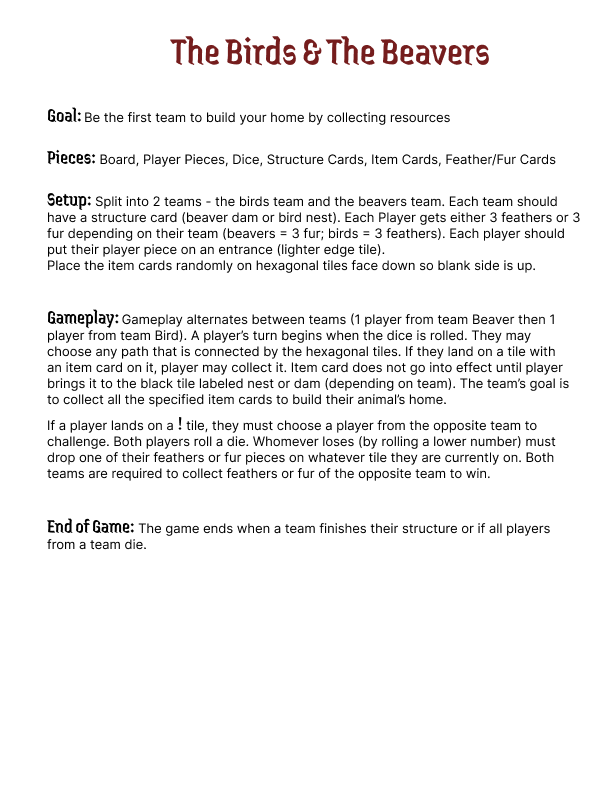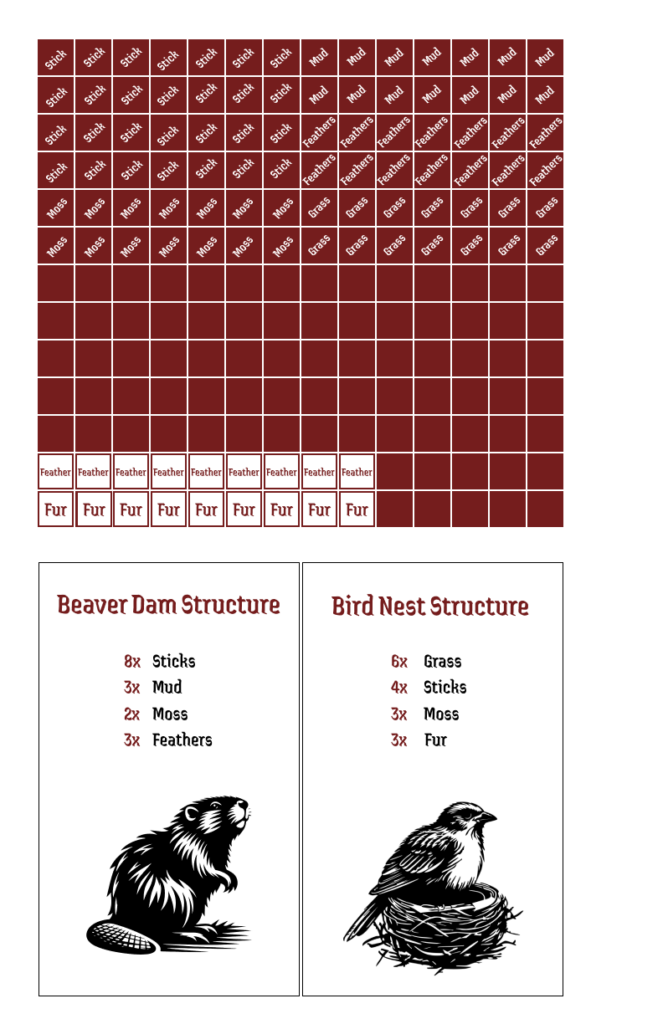troll riddle run
- The most frustrating part was getting three riddles right in a row at the end.
- I had a lot of fun telling the others riddles.
- I don’t think we should have to guess a riddle right to start the game.
- If i had a magic wand to change something in this gam( which i do lol) i would make it so you can just start rolling and you don’t have to answer a riddle to start you first turn.
- the riddle at the start.
- troll, riddles, fun.
rotten to the core
- The most frustrating part of this game was the investigation cards, and the spinner not working like it was intended to.
- The art was really cute, and the game itself when at a pretty steady pace.
- I wish i had better luck but other than that no.
- If i had a magic wand id make their be more ways to sabotage other players.
- Make a better spinner.
- cutesy, mindful, demure.
Gideons game
- the most frustrating aspect was it wasn’t entirely finished, some parts were missing and the cards didn’t reflect what was in the rules.
- the chaos of the cards because some were overpowered if you were just playing with the cards and weren’t looking at the rules for every card description.
- stock pile good cards, but it is a fun concept to get a new hand every turn.
- if i had a magic wand i would finish the game.
- making the card descriptions match what was in the rules.
- grenade, rocket launcher, chaos.






